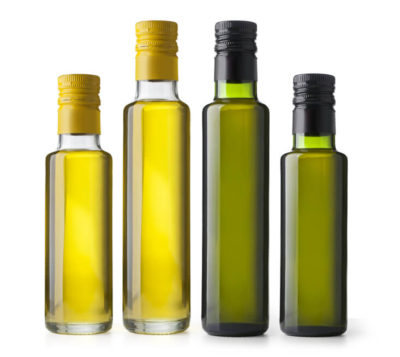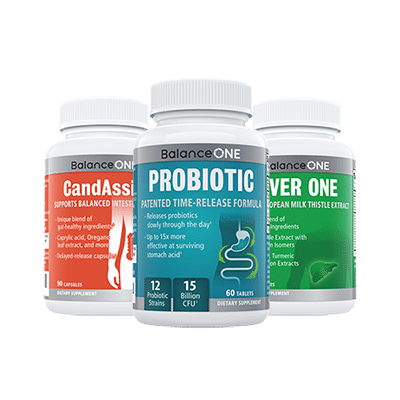How to Buy “Real” Olive Oil

Olive oil is one of the most common oils on the planet. It is also one of the healthiest to eat and use in your cooking, although it also has uses in cosmetics, soaps, pharmaceuticals and even as fuel for oil lamps.
In cooking, olive oil has been in use for centuries as it was a favorite of the ancient Greeks and Romans.
Today, olive oil is used all over the world, and features heavily in many healthy eating plans like the Candida diet. In fact, it’s on my list of Candida-fighting foods and an essential cooking ingredient to include in your pantry.
But are you sure that your olive oil is the “real deal”? Recent evidence has shown that olive oil is one of the major sources of fraud and mislabeling in our food supply.
Luckily, there are a few simple tips you can follow to ensure that your olive oil is just what it claims to be, and in this blog post I’m going to share those with you. But first, let’s look at the different types of olive oil on the market.
There are many different types of olive oil, based on the type of olives used in production. Today, Spain accounts for almost half of the entire world production of olive oil, particularly the Andalucia region.
The regulation of olive oil is overseen by the International Olive Council (IOC), which also assigns the commercial grades to each type of oil based on its production method. The labeling standards in the US governed by the USDA are the same as the ones provided by the IOC (1):
- Extra-virgin olive oil (EVOO) is of the highest quality with superior taste and no sensory defects. Less than 10% of all the olive oil in the world falls under this category.
- Virgin olive oil is slightly inferior in quality with a free acidity of up to 1.5% compared to 0.8% of the extra virgin oil. However, both of them are made through mechanical methods only, with no chemicals involved.
- Refined olive oil is the most common type. It is made using various refining methods, which are allowed as long as they do cause any alterations to the initial glyceridic structure.
- Olive pomace oil (referred simply as olive oil in the US) contains mostly refined oil which is blended with virgin oil. Due to its high smoke point, it is often used in restaurants.
- Lampante virgin olive oil is a poor quality oil. It is obtained through mechanical methods, but requires further processing in order to be safe to use in cooking.
Table Of Contents
Is It Real?
Many people praise olive oil for its health benefits as well as its superior taste when it comes to cooking. In fact, it is one of the list of foods with antifungal properties that can be a useful addition to your eating plan. That is why those same people are willing to pay a higher price in order to use only the best quality virgin oil, which has not been refined in any way.
However, there have been countless instances all over the world where lower quality products were the subject of mislabeling. Although consumers believed they were buying extra virgin olive oil (EVOO), results showed that the oil in the bottles was actually mixed with refined oil.
Australia was the first country to conduct a study to determine exactly how common this problem was. That study was performed by the Australian Olive Association (2) and, as it turns out, more than half of the products they tested failed to live up to the description on the label. Even though Australians pay around $200 million each year for EVOO, many were actually receiving low grade, treated oil.
After the initial results were made public in Australia, several other countries also conducted research into the products in their market. New Zealand and China reported similar results to those of Australia.
A study performed by the University of California showed that as much as 70% of imported extra virgin olive oil was not, in fact, of the high quality advertised on the label. Many of the problems were traced back to the Italian olive oil industry, which faced accusations of fraud and corruption.
How To Find Genuine EVOO
As mentioned above, most of the mislabeled olive oil came from Italian manufacturers. However, there are some Italian brands which offer true extra-virgin olive oil, and there are mislabeled brands that are not Italian, so simply avoiding Italian olive oil this is not necessarily a foolproof method.
Another method would be to stick to the brands that passed the test in the studies mentioned above. However, those results only showed that the olive oil brands were not mislabeled at the time of the studies. Most of them do not have their own olive farms so they rely on suppliers, meaning that this is not 100% guaranteed to work either.
As a result of the scandal caused by mislabeled olive oil brands, certain independent agencies appeared and now offer certification as a way of showing that specific EVOO brands are, in fact, genuine. The California Olive Oil Council (COOC) is an example of this (3). Submission for certification is entirely voluntary.
A seal of approval is awarded after an inspection in order to show that the olive oil is truly extra virgin. More recently, another seal of approval can also be awarded by the USDA, which has started testing olive oil brands on request.
The “fridge test” is a method used by many people to establish whether their olive oil is good quality or not. It is thought that leaving the olive oil in the fridge for a couple of days is enough to tell. It is believed that if the oil is extra virgin, it should solidify. However, this is unfortunately not a reliable way to determine if it’s authentic EVOO.
Monounsaturated oils such as olive oil will solidify inside the fridge, while polyunsaturated oils such as sunflower and safflower oil will not. However, new oils that are not olive oil but have a high content of oleic acid would also solidify. In reality, this is a test to see whether the oil is monounsaturated or not, not if it is extra virgin olive oil.
A multistage sensory test is often the most accessible way to spot extra virgin olive oil. EVOO is sensitive to light and heat and will go off quickly if it is not bottled properly. That is why a darker bottle is a good indication of a properly stored olive oil.
Moreover, the smell of EVOO is distinct, even to someone unfamiliar with it. Comparing it to a refined oil should enable anyone to tell the difference. Also note that the taste of extra virgin olive oil is slightly more bitter, like the olives.
References
(1) International Olive Council, “Designations and definitions of olive oils”, http://www.internationaloliveoil.org/estaticos/view/83-designations-and-definitions-of-olive-oils.
(2) The Global Mail, “Extra Virgin: International Mistress Of Disguise”, http://www.theglobalmail.org/feature/extra-virgin-international-mistress-of-disguise/265/.
(3) California Olive Oil Council. http://www.cooc.com/producers_certified.html.

3-Month Candida Elimination Kit Start Your 3-month Candida Cleanse
This Candida Kit contains all the supplements recommended on the Candida Diet:
- LIVER ONE to process and remove the toxins created by Candida.
- CANDASSIST to inhibit and weaken the Candida colonies in your gut.
- PROBIOTIC to replace the Candida yeast with probiotic bacteria.
Plus... the CANDIDA DIET RECIPE BOOK with 50+ low-sugar recipes

Thank you for keeping us informed Lisa
No problem, I’m glad you found it useful!
You didn’t mention organic. I buy TJ’s organic extra virgin olive oil. Are you saying there could be any problem with this? I do trust that TJ’s reputation is very important to them so it’s hard for me to imagine there would be any monkey business with their labeled EVVO. It’s also from Spain.
I would imagine that Trader Joes coconut oil would be a good brand, although I haven’t tried it myself!
I often buy my OL from TJ’s as well and I buy their EVVO product. Their price is very good and that makes me wonder though. Not that a higher price would guarantee anything, but I just wonder how they could provide it at such an aggressive price.
You’re right to be suspicious of really cheap brands, although as I mentioned I’ve never tried the TJ’s brand. The best solution would probably be to buy a bottle of EVOO from a really reputable source, for example one that is certified by the COOC, and do a side-by-side taste and smell test.
good advice Lisa. Thanks. I’m low on olive oil now, so next week I’ll look for a reputable brand at Whole foods and give this a try.
Thank you so much , it’s very helpful, and I would love to see a list of fruits which are usefull for fight aginst yeast infection
Although I am coming from a family that produces its own olive oil I am not able to tell if an oil has been chemically treated. We sell all our oil to Italy and we know that they use it to add it to faulty oils to give them the taste they need.
Unfortunately olive oil is not regulated so no one can tell what they buy…
If there is a mill near you then thats where you should buy it from.
Otherwise maybe try find a small supplier.
I am making my own effort to provide EVO which you could see at http://kck.st/Y33IMf if you would like to learn more about EVO
If you know that they are adulterating it why do you sell it to them?
According to my experience as a child, if the oil in the fridge solidify is non good; but if it turns like a granita ,green gold transparent should be ok.
Thanks